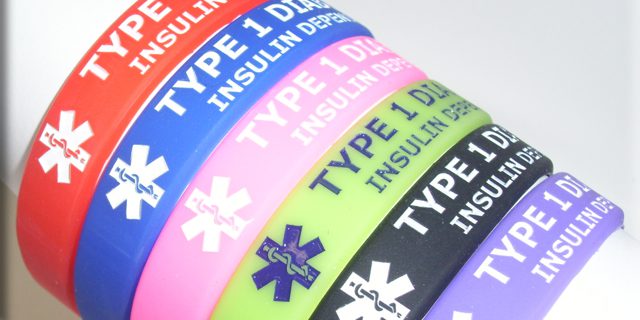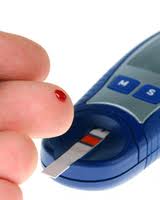Heroes are people who have the courage to turn challenges into advocacy.
“Our life is made up of numbers.”
 Meri Schuhmacher is the mother of four sons: three of them have Type 1 diabetes. What is a typical day for Meri? “Our life is made up of numbers,” she says. She describes her day around blood glucose checks, “Nighttime blood sugar checks are at 10pm, 11pm and 1am. More if they are ill, or if there are insulin pump issues or ketones. At 7am blood glucose checks. The boys call me from school twice a day each, to report numbers and have me count carbs for them. More blood sugar checks after school, dinner and bedtime.” She seldom gets a full night’s sleep.
Meri Schuhmacher is the mother of four sons: three of them have Type 1 diabetes. What is a typical day for Meri? “Our life is made up of numbers,” she says. She describes her day around blood glucose checks, “Nighttime blood sugar checks are at 10pm, 11pm and 1am. More if they are ill, or if there are insulin pump issues or ketones. At 7am blood glucose checks. The boys call me from school twice a day each, to report numbers and have me count carbs for them. More blood sugar checks after school, dinner and bedtime.” She seldom gets a full night’s sleep.
Type 1 Diabetes Versus Type 2 Diabetes
Type 1 diabetes is different from Type 2 diabetes. Type 1 diabetes is usually diagnosed in people before the age of 30, although people can receive the diagnosis at any age. In Type 1 diabetes, the body stops producing insulin. Insulin is the essential hormone that moves blood glucose, the food for the body’s cells, around the body. Insulin is created in the pancreas by beta cells. In Type 1 Diabetes, it is believed that the body’s immune system mistakenly attacks and destroys these cells. There is some question if a virus or set of viruses may be involved but Type 1 diabetes is also passed down through families.
Type 1 diabetes is often diagnosed suddenly when a person goes to their doctor or the emergency room with symptoms of high blood sugar like weight loss despite normal or increased eating, unquenchable thirst, frequent urination, pain or tingling in hands and feet.
The Power of Same
Meri’s boys are 16, 12 and 10 years old; her oldest is 18 and does not have Type 1 diabetes. Meri started writing her blog “Our Diabetic Life” because she had been “running this marathon with little support for 10 years,” she relates. “I needed to get my thoughts out of my head so I could sleep at night.”
The writing connected her with others. “My blog became my ark. The online community was the land I desperately yearned for.” She found what many caregivers and patient bloggers discover, “The power of “same” is powerful. Knowing I wasn’t alone changed everything. It was a simple salve for the ache.”
Everything Affects Blood Glucose
Few understand the enormity of a Type 1 diabetes diagnosis. “Everything affects blood glucose. Stress,  illness, exercise, food, excitement, even weather,” she states. “ It’s like trying to hit a moving target.” This is especially true as children grow. “Food, stress and illness affect every body differently…you can eat the same lunch every day, and give same insulin, and the numbers will NEVER be the same. My 12 year old eats pasta and it’s like drinking water for him. My 10 year old eats pasta and his blood glucose skyrockets. My boys have the same disease, but diabetes, food, stress affects their sugars differently. Doctors and insurance companies must realize that not everyone responds well to the same insulin therapies.”
illness, exercise, food, excitement, even weather,” she states. “ It’s like trying to hit a moving target.” This is especially true as children grow. “Food, stress and illness affect every body differently…you can eat the same lunch every day, and give same insulin, and the numbers will NEVER be the same. My 12 year old eats pasta and it’s like drinking water for him. My 10 year old eats pasta and his blood glucose skyrockets. My boys have the same disease, but diabetes, food, stress affects their sugars differently. Doctors and insurance companies must realize that not everyone responds well to the same insulin therapies.”
Keeping up with the blood glucose numbers is just the tip of the iceberg. Type 1 diabetes is expensive. It requires insulin, glucose monitors, lancets, test strips, syringes or insulin pumps. “I believe test strips have legs. They are everywhere,” Meri quips.
It also generates hazardous waste. Meri is lucky because her hospital accepts sharps and provides sharps containers for free. “It’s a 45 minute drive, but worth it! At school the boys put their test strips in sharps containers, to contain the blood as best they can.” There are communities in the US and throughout the world that do not accept sharps or, if they do, charge for their disposal.
Then there is the equipment. Every piece of equipment has different software so they are incompatible. “Apps and tools are available for managing numbers but there is no universal platform for all devices yet,” says endocrinologist Dr. Jen Dyer.
The emotional burden has also been intense. “There was a lot of soul searching. There was guilt, and blaming myself. It’s been a lot to grapple with as a young mother.” With support she has experienced acceptance, “I realized that we aren’t on Earth to be miserable. We must find joy in every circumstance. That’s what life’s all about.”
Loss
Meri and her boys recently endured tragedy. Eighteen months ago her husband, Ryan, died of metastatic melanoma. “First biopsy showed the diagnosis. Every single test after that showed nothing. Chemo and radiation followed. We thought we were one of the lucky ones. Two years after the first diagnosis we got the second. My husband was a huge support! He is missed in a million ways.”
Again, being online helped. “Once I found the promised land of the Diabetes Online Community, I found home. My strength comes from knowing there is an army of parents out there doing what I do each and every day. A combination of friendships and faith. It made me stronger than I ever thought possible.”
Based on the #HCHLITSS tweetchat of February 6, 2014.
______________________________________________________________________
![]()
The Diabetes Online Community has started a special Valentine’s Day donation campaign called Spare a Rose Save a Child. In Africa and Haiti the mortality rate for a newly diagnosed child with Type 1 diabetes is upwards of 80%.
Buy one less rose on Valentine’s Day and use that money to help save the life of a child who can’t afford insulin. $5 is one month of life for a child.








Hey thanks for joining the Spare a Rose community!
Absolutely! Glad to be a part of a terrific effort by the Diabetes Online Community!